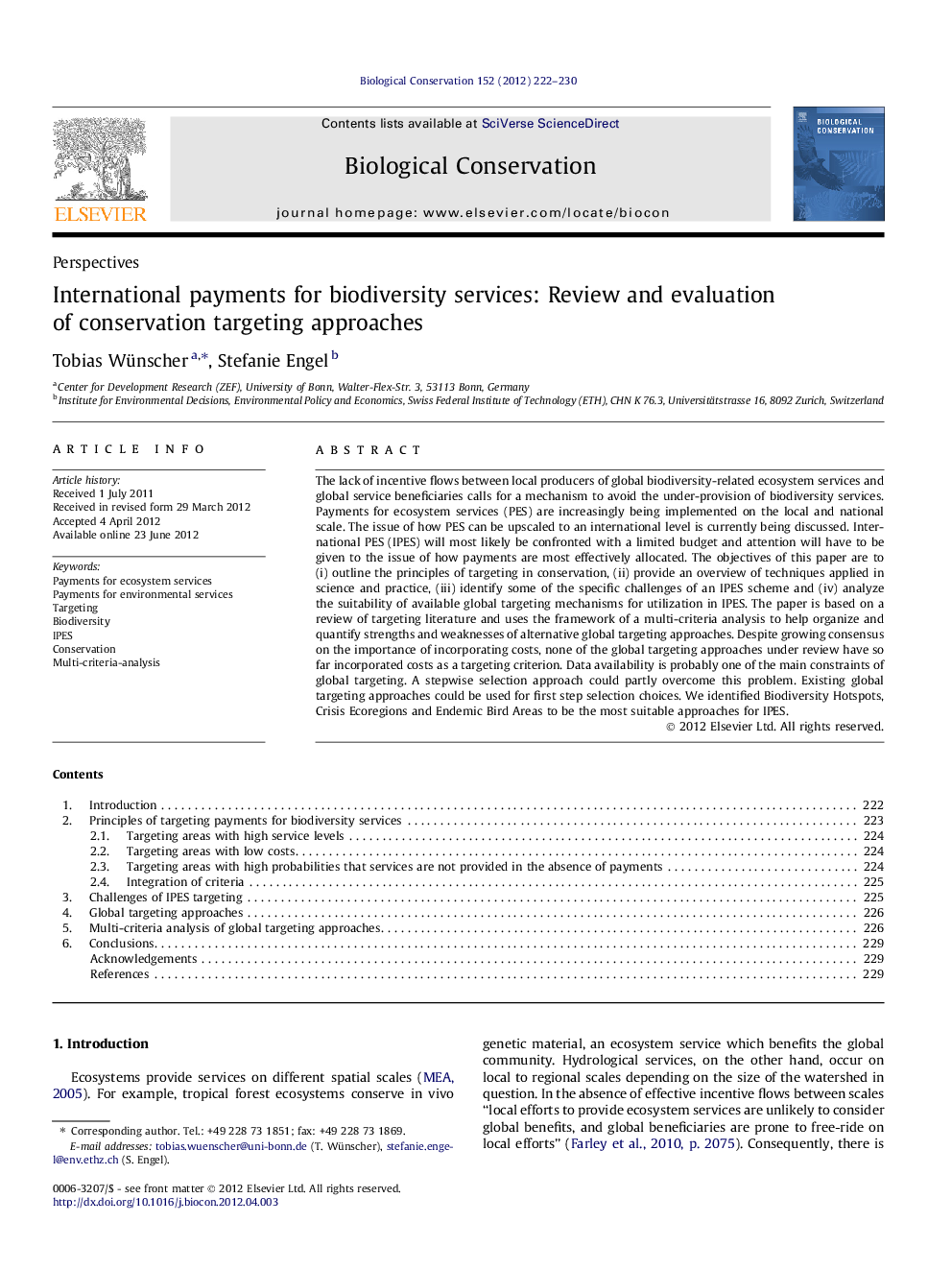| کد مقاله | کد نشریه | سال انتشار | مقاله انگلیسی | نسخه تمام متن |
|---|---|---|---|---|
| 4385238 | 1617949 | 2012 | 9 صفحه PDF | دانلود رایگان |

The lack of incentive flows between local producers of global biodiversity-related ecosystem services and global service beneficiaries calls for a mechanism to avoid the under-provision of biodiversity services. Payments for ecosystem services (PES) are increasingly being implemented on the local and national scale. The issue of how PES can be upscaled to an international level is currently being discussed. International PES (IPES) will most likely be confronted with a limited budget and attention will have to be given to the issue of how payments are most effectively allocated. The objectives of this paper are to (i) outline the principles of targeting in conservation, (ii) provide an overview of techniques applied in science and practice, (iii) identify some of the specific challenges of an IPES scheme and (iv) analyze the suitability of available global targeting mechanisms for utilization in IPES. The paper is based on a review of targeting literature and uses the framework of a multi-criteria analysis to help organize and quantify strengths and weaknesses of alternative global targeting approaches. Despite growing consensus on the importance of incorporating costs, none of the global targeting approaches under review have so far incorporated costs as a targeting criterion. Data availability is probably one of the main constraints of global targeting. A stepwise selection approach could partly overcome this problem. Existing global targeting approaches could be used for first step selection choices. We identified Biodiversity Hotspots, Crisis Ecoregions and Endemic Bird Areas to be the most suitable approaches for IPES.
► Under-provision of global biodiversity services calls for a global mechanism.
► International payments for biodiversity services may address this challenge.
► The objective of this paper is to discuss how payments can be targeted globally.
► A lack of global data on costs remains to be a major targeting constraint.
► In a multi-criteria analysis Biodiversity Hotspots is the most suitable approach.
Journal: Biological Conservation - Volume 152, August 2012, Pages 222–230